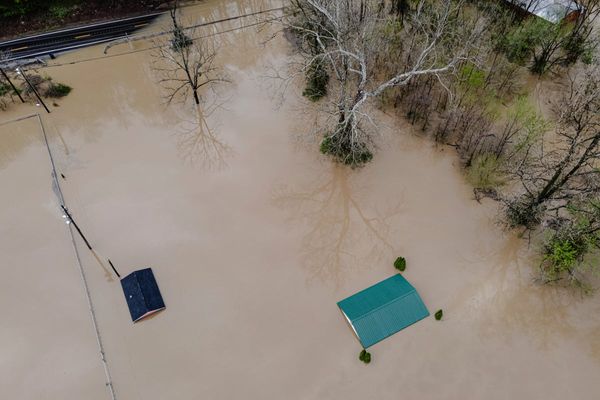
September arabica coffee (KCU24) on Wednesday closed down -4.95 (-2.16%), and July ICE robusta coffee (RMN24) closed down -69 (-1.57%).
Coffee prices Wednesday posted moderate losses due to weakness in the Brazilian real (^USDBRL). The real on Wednesday tumbled to a 19-month low against the dollar, encouraging export sales from Brazil's coffee producers. Also, forecasts that called for rain next week in Brazil's coffee-growing regions have eased drought concerns and are weighing on coffee prices.
On Monday, coffee prices climbed to 2-week highs due to concerns that drier-than-normal conditions would adversely affect Brazil's coffee crops. Somar Meteorologia reported Monday that Brazil's Minas Gerais region received no rain last week for the third consecutive week. Minas Gerais accounts for about 30% of Brazil's arabica crop.
Robusta coffee prices are underpinned by fears that excessive dryness in Vietnam will damage coffee crops and curb global production. On May 22, coffee trader Volcafe said Vietnam's 2024/25 robusta coffee crop may only be 24 million bags, the lowest in 13 years, as poor rainfall in Vietnam has caused "irreversible damage" to coffee blossoms. Volcafe also projects a global robusta deficit of 4.6 million bags in 2024/25, a smaller deficit than the 9-million-bag deficit seen in 2023/24 but the fourth consecutive year of robusta bean deficits.
Last Thursday's bi-annual report from the USDA was bearish for coffee prices. The USDA's Foreign Agriculture Service (FAS)projected that world coffee production in 2024/25 will increase +4.2% y/y to 176.235 million bags, with a +4.4% increase in arabica production to 99.855 million bags and a +3.9% increase in robusta production to 76.38 million bags. The USDA's FAS forecasts that 2024/25 ending stocks will climb by +7.7% to 25.78 million bags from 23.93 million bags in 2023/24. The USDA's FAS projects that Brazil's 2024/25 arabica production would climb +7.3% y/y to 48.2 mln bags due to higher yields and increased planted acreage. The USDA's FAS also forecasts that 2024/54 coffee production in Colombia, the world's second-largest arabica producer, will climb +1.6% y/y to 12.4 mln bags.
The pace of the Brazilian coffee harvest has picked up, a bearish factor for coffee prices. Safras & Mercado reported last Friday that Brazil's 2024/25 coffee harvest was 44% completed as of June 18, faster than 39% last year at the same time and faster than the 5-year average of 40%.
A rebound in ICE coffee inventories from historically low levels is also negative for prices. ICE-monitored robusta coffee inventories on February 21 fell to a record low of 1,958 lots, although they recovered to an 11-1/2 month high last Thursday of 5,995 lots. Also, ICE-monitored arabica coffee inventories fell to a 24-year low of 224,066 bags on November 30, but they recovered to a 16-month high Tuesday of 842,434 bags.
Tight robusta coffee supplies from Vietnam, the world's largest producer of robusta coffee beans, are a bullish factor. On March 26, Vietnam's agriculture department projected that Vietnam's coffee production in the 2023/24 crop year would drop by -20% to 1.472 MMT, the smallest crop in four years, due to drought. Also, the Vietnam Coffee Association said that Vietnam's 2023/24 coffee exports would drop -20% y/y to 1.336 MMT. Late Monday, Vietnam's Customs Department reported that Vietnam's May coffee exports fell -47% y/y to 79,358 MT, the lowest amount for the month of May since 2009. Also, Jan-May coffee exports fell -5.8% y/y to 817,154 MT. USDA FAS on May 31 projected that Vietnam's robusta coffee production in the new marketing year of 2024/25 will dip slightly to 27.9 million bags from 28 million bags in the 2023/24 season.
There has recently been some bearish coffee export news. On June 12, Cecafe reported that Brazil's May green coffee exports surged 90% y/y to 4 million bags. On June 5, the International Coffee Organization (ICO) reported that global Apr coffee exports rose +16.8% y/y to 10.24 million bags, and Oct-Apr global coffee exports were up +11.1% y/y at 80.99 million bags. Brazil's exporter group Comexim, on February 1, raised its Brazil 2023/24 coffee export estimate to 44.9 million bags from a previous estimate of 41.5 million bags. Brazil is the world's largest producer of arabica coffee beans.
This past year's El Nino weather event has been bullish for coffee prices. An El Nino pattern typically brings heavy rain to Brazil and drought to India, negatively impacting coffee crop production. The El Nino event has brought drought to Vietnam's coffee areas this year, according to an official from Vietnam's Institute of Meteorology, Hydrology, and Climate Change.
In a bearish factor, the International Coffee Organization (ICO) projected on May 3 that 2023/24 global coffee production would climb +5.8% y/y to 178 million bags due to an exceptional off-biennial crop year. ICO also projects global 2023/24 coffee consumption will rise +2.2% y/y to 177 million bags, resulting in a 1 million bag coffee surplus.
On the date of publication, Rich Asplund did not have (either directly or indirectly) positions in any of the securities mentioned in this article. All information and data in this article is solely for informational purposes. For more information please view the Barchart Disclosure Policy here.






